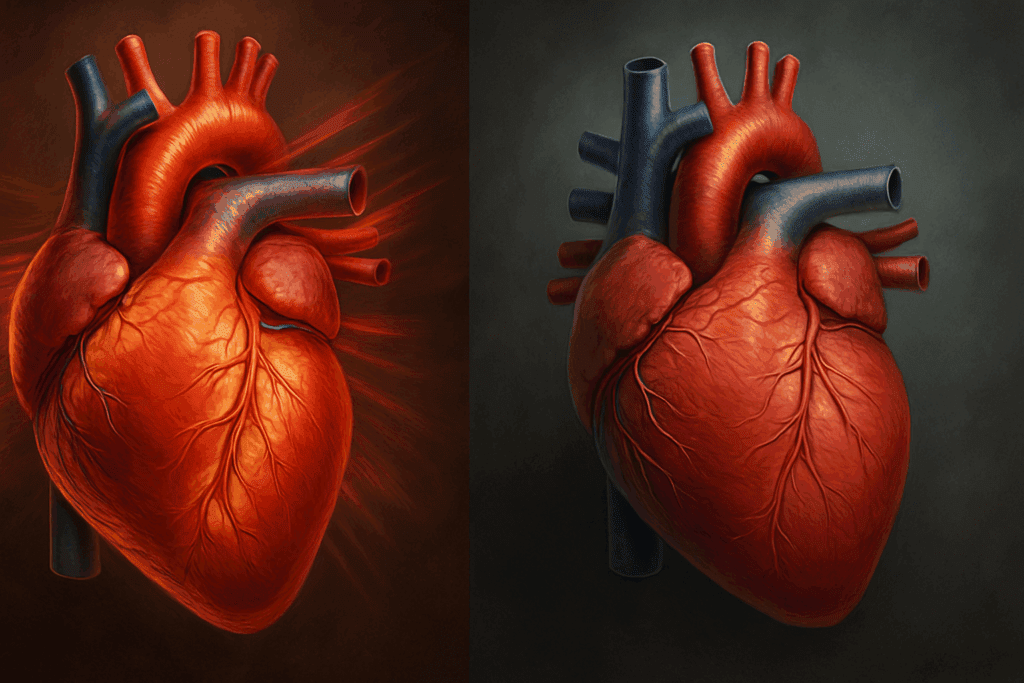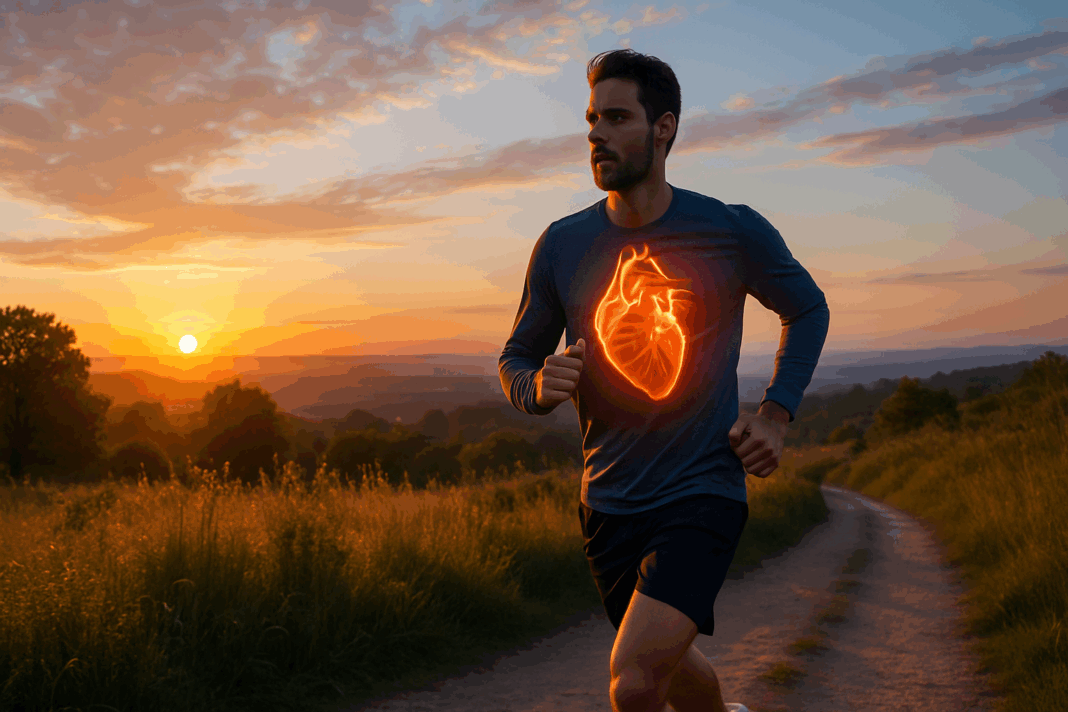Exercise is an essential part of a healthy lifestyle, offering countless physical and mental benefits—from improved cardiovascular health and enhanced endurance to reduced stress and better sleep. Yet, one physiological response that sometimes causes concern, especially among newer fitness enthusiasts or those returning to exercise after a break, is an elevated heart rate after exercise. Understanding the causes behind a high heart rate after exercise, knowing what is normal, and recognizing when it may signal a need for medical attention can empower individuals to exercise more safely, confidently, and effectively.
After a vigorous workout, it is natural for the heart to beat faster to accommodate increased demands for oxygen and nutrient-rich blood throughout the body. However, when that elevated heart rate persists longer than expected or seems unusually high relative to the intensity of the workout, it can raise valid questions about cardiovascular response, recovery, and overall heart health. This article explores the spectrum of post-exercise heart rate patterns, distinguishes between typical and atypical responses, and outlines expert-backed strategies for monitoring and managing your heart rate effectively.
You may also like: Smart Nutrition Choices for a Healthier Lifestyle: What to Know About Whole Grain Rice and Whole Wheat Rice

Understanding What Happens to Your Heart During and After Exercise
When you engage in physical activity, your muscles require more oxygen to meet the energy demands of movement. To supply this increased demand, your heart rate rises to pump blood more rapidly throughout the body. This physiological response, governed by the autonomic nervous system and driven by sympathetic stimulation, is entirely expected. During moderate to intense exercise, it is normal for the heart rate to increase to between 60% and 90% of your maximum heart rate, which is typically calculated by subtracting your age from 220.
After the cessation of activity, your parasympathetic nervous system takes over, working to slow the heart rate back down to its resting state. The time it takes for your heart rate to recover is known as heart rate recovery (HRR), and it is considered an important indicator of cardiovascular fitness. In most healthy individuals, the heart rate should begin to decline noticeably within the first one to three minutes post-exercise, with a return to near-baseline levels occurring within 15 to 30 minutes. A persistently fast heart rate after exercise or a delayed HRR may warrant a closer look at your fitness level, hydration status, or underlying health conditions.

Why a High Heart Rate After Exercise Can Be Normal
It is important to emphasize that a raised heart rate after exercise is not inherently a cause for concern. Several factors contribute to this extended elevation, many of which are benign and part of the body’s natural adaptation process. For example, high-intensity interval training (HIIT), long endurance workouts, or resistance training sessions can all induce sustained cardiovascular responses due to their demand on both aerobic and anaerobic systems.
Moreover, environmental factors like heat and humidity can exaggerate cardiovascular strain, making it more difficult for the body to cool down efficiently. Dehydration, which reduces blood volume and places greater demand on the heart to maintain circulation, can also result in a temporary elevated heart rate after exercise. Additionally, emotional excitement, anxiety, or the consumption of stimulants like caffeine before a workout can prolong sympathetic nervous system activity and delay heart rate normalization.
It is also worth noting that individuals new to exercise or those with lower levels of baseline cardiovascular fitness may experience a more pronounced and extended increase in post-exercise heart rate. As fitness improves over time, the heart becomes more efficient, and the time required for recovery generally shortens.

When a Raised Heart Rate After Exercise Might Signal a Problem
While a high heart rate after exercise is often harmless, there are instances where it may indicate a more serious issue that deserves medical evaluation. One key indicator is how quickly your heart rate recovers within the first two minutes after exercise. A delayed recovery—typically defined as a drop of less than 12 beats per minute in the first minute—can be associated with an increased risk of cardiovascular disease and even mortality.
Other warning signs include experiencing chest pain, shortness of breath, dizziness, palpitations, or fatigue that feels disproportionate to the level of exertion. These symptoms, in conjunction with a rapid heart rate after exercise, may suggest an underlying arrhythmia, such as supraventricular tachycardia or atrial fibrillation, both of which can cause prolonged episodes of fast or irregular heartbeat.
Additionally, individuals with pre-existing conditions such as hypertension, diabetes, or known heart disease should pay closer attention to elevated heart rate patterns after exertion. In these populations, a raised heart rate after exercise may reflect a diminished capacity of the heart to handle stress, warranting closer monitoring and potentially adjustments in training intensity, medications, or overall health management.

How to Measure and Interpret Your Post-Exercise Heart Rate
Accurately tracking your heart rate during and after workouts can provide critical insights into your cardiovascular fitness and help identify when your body is recovering appropriately. Today’s wearable fitness trackers, chest straps, and smartwatches make it easier than ever to monitor heart rate in real time. When interpreting this data, it’s essential to establish your normal range by first calculating your maximum heart rate and identifying your resting heart rate, typically measured first thing in the morning.
Once you know your baseline, observe how your heart rate behaves during different types of exercise and how quickly it returns to normal. A fast heart rate after exercise that steadily declines within a few minutes is generally not problematic. However, if you notice your heart rate remains elevated for more than 30 minutes or spikes unexpectedly during routine activity, it may be a good idea to consult a healthcare provider.
Heart rate variability (HRV) is another valuable metric that reflects the balance between the sympathetic and parasympathetic nervous systems. A low HRV can suggest heightened stress or insufficient recovery, while a higher HRV is typically associated with better resilience and recovery capacity. Understanding these nuances can help tailor your training program to your personal fitness level and recovery needs.

Practical Strategies to Support Healthy Heart Rate Recovery
Improving heart rate recovery is not only a marker of fitness but also a modifiable factor in long-term cardiovascular health. One of the most effective ways to enhance post-exercise recovery is through structured aerobic training, which strengthens the heart muscle, increases stroke volume, and enhances parasympathetic tone. Activities such as brisk walking, cycling, swimming, or steady-state jogging performed consistently can help your heart become more efficient over time.
Incorporating an active cool-down after intense exercise is another practical step. Rather than abruptly stopping, gradually reducing your activity level allows your body to slowly transition from exertion to rest, aiding in temperature regulation and preventing blood from pooling in the extremities. Hydration and electrolyte replenishment are equally important, particularly after sweating heavily, as low fluid levels can lead to an artificially raised heart rate after exercise.
Nutrition also plays a role in cardiovascular recovery. Consuming foods rich in potassium, magnesium, and antioxidants—such as leafy greens, bananas, nuts, and berries—supports vascular function and cardiac efficiency. Additionally, prioritizing sleep and managing psychological stress can reduce baseline sympathetic nervous system activation, helping to prevent excessively rapid heart rate responses during and after physical activity.
When to See a Healthcare Provider About a Fast Heart Rate After Exercise
Recognizing the difference between normal adaptation and potential pathology is key to safeguarding your health during a fitness journey. If you consistently observe an elevated heart rate after exercise that doesn’t resolve within 30 to 60 minutes, or if it is accompanied by symptoms such as chest discomfort, fainting, or heart palpitations, it’s important to seek medical evaluation.
A healthcare provider can perform diagnostic assessments such as an electrocardiogram (ECG), stress test, or Holter monitor to evaluate for arrhythmias or structural heart abnormalities. In some cases, additional tests like echocardiography or blood panels may be necessary to assess for electrolyte imbalances, anemia, or thyroid dysfunction—all of which can influence cardiac output and recovery.
Being proactive about your heart health, especially when embarking on new exercise routines or increasing training intensity, is a form of self-care that supports longevity. Promptly addressing unusual patterns of rapid heart rate after exercise can not only prevent potential complications but also provide peace of mind and reassurance that your body is functioning optimally.
Elevated Heart Rate After Exercise in Specific Populations
Certain groups may be more prone to experiencing a persistently elevated heart rate after exercise, including older adults, individuals with sedentary lifestyles, and those recovering from illness. Aging is associated with a natural decline in maximum heart rate and a slower return to baseline due to changes in cardiac output and autonomic regulation. This does not necessarily indicate poor health but should be taken into account when evaluating post-exercise recovery.
For beginners or those reintroducing physical activity after a period of inactivity, it is common to observe a more pronounced cardiovascular response. This includes a higher heart rate during and after exertion, reflecting deconditioned cardiovascular and muscular systems. With consistent, appropriately scaled training, the body typically adapts and becomes more efficient over time.
In individuals managing chronic conditions, such as diabetes or chronic fatigue syndrome, raised heart rate after exercise may result from impaired autonomic function or reduced blood volume. These individuals may benefit from low-impact activities like yoga, Pilates, or water-based exercise, which are less likely to overstimulate the cardiovascular system. Personalized guidance from a qualified exercise physiologist or medical professional is often helpful in these cases.
Building a Personalized Fitness Plan That Supports Cardiovascular Health
Creating a well-rounded fitness routine that supports healthy heart rate patterns begins with understanding your body’s baseline and establishing realistic goals. Incorporate a mix of aerobic, resistance, and flexibility training to develop a balanced approach that enhances cardiovascular endurance while also supporting muscular strength and joint stability.
Periodization—a strategic approach to varying training intensity and volume—can help prevent overtraining, which is often linked to prolonged elevated heart rate after exercise. Scheduling recovery days, integrating low-intensity activities, and using tools like heart rate monitors can help optimize performance while protecting against burnout.
Working with certified fitness professionals or healthcare providers can also ensure your plan aligns with your current health status. Whether you’re aiming to improve stamina, lose weight, or boost athletic performance, tailoring your workouts to your unique physiology will support safer and more effective results. Monitoring your heart rate over time provides a window into how your body is adapting, allowing for continuous adjustments that foster long-term wellness.

Frequently Asked Questions: Elevated Heart Rate After Exercise
1. Can dehydration alone cause a persistently high heart rate after exercise? Yes, dehydration is one of the most overlooked contributors to a high heart rate after exercise. When the body is dehydrated, blood volume decreases, forcing the heart to pump faster to maintain adequate circulation and oxygen delivery to tissues. This can result in a fast heart rate after exercise that takes longer than usual to return to resting levels. Even mild dehydration can exaggerate cardiovascular strain, especially in hot or humid environments. To prevent an elevated heart rate after exercise caused by fluid imbalance, athletes and fitness enthusiasts should hydrate before, during, and after workouts, adjusting intake based on sweat rate and activity intensity.
2. Is it normal to experience a raised heart rate after exercise during recovery days? Surprisingly, a raised heart rate after exercise can still occur even on days designated for active recovery, particularly if the body has not fully recuperated from previous exertion. This phenomenon is often associated with accumulated fatigue, disrupted sleep, or underlying stress, all of which activate the sympathetic nervous system. A consistently rapid heart rate after exercise on rest days may be a sign that your body is still under physiological strain and needs more restorative practices. Monitoring heart rate trends over time can help differentiate between normal variations and signs of overtraining or under-recovery. Paying attention to these fluctuations allows for better workout programming and helps prevent burnout.
3. How does caffeine affect elevated heart rate after exercise? Caffeine acts as a stimulant, increasing adrenaline levels and promoting temporary cardiovascular activation. When consumed before or close to a workout, it can contribute to an elevated heart rate after exercise that lingers longer than usual. This is especially true for individuals who are sensitive to stimulants or who consume high doses. While caffeine can enhance performance and endurance, it’s important to understand your tolerance levels and how it affects post-exercise heart rate. Reducing caffeine intake or avoiding it before high-intensity sessions may help normalize post-exercise recovery for those prone to sustained elevations.
4. Can emotional stress result in a fast heart rate after exercise, even with moderate activity? Absolutely. Psychological stress activates the sympathetic nervous system and increases circulating cortisol and adrenaline, which can lead to a fast heart rate after exercise regardless of physical effort. When emotional strain coincides with physical exertion, the body may struggle to down-regulate its heightened state, resulting in a prolonged elevated heart rate after exercise. Incorporating stress-reducing practices like mindfulness, meditation, or breathwork before and after workouts can significantly improve post-exercise heart rate recovery. A holistic approach that addresses both physical and mental stress is essential for optimal cardiovascular resilience.
5. Does the type of exercise influence how long a rapid heart rate after exercise lasts? Yes, the exercise modality and intensity significantly influence heart rate patterns during and after workouts. For example, interval training or circuit-based strength sessions can produce a more pronounced and sustained rapid heart rate after exercise due to the repeated spikes in cardiovascular demand. In contrast, steady-state aerobic activities often lead to a more gradual and predictable heart rate recovery curve. Additionally, exercises that engage larger muscle groups or involve compound movements typically elicit a stronger cardiovascular response. Understanding these nuances can help you tailor your fitness routine based on recovery capacity and desired heart rate response.
6. Are wearable fitness devices reliable for tracking elevated heart rate after exercise? Most modern wearable fitness devices provide reasonably accurate heart rate data during exercise and recovery, especially when equipped with optical sensors or chest straps. However, motion artifacts, skin tone, and sensor placement can affect precision. When evaluating a high heart rate after exercise, it’s helpful to compare wearable data with perceived exertion and symptom tracking for a fuller picture. If you notice consistent discrepancies or abnormal readings, consider using a chest strap monitor, which tends to be more reliable for high-intensity activities. Leveraging both technology and body awareness can give you the most accurate insights into your cardiovascular response.
7. What role does sleep play in preventing a raised heart rate after exercise? Sleep is fundamental to cardiovascular regulation and recovery. Poor sleep quality or insufficient sleep disrupts autonomic nervous system balance, often tipping the scale toward sympathetic dominance. This imbalance can manifest as a raised heart rate after exercise and impair the body’s ability to shift into recovery mode. Chronic sleep deficits can also diminish heart rate variability and elevate baseline heart rate, making elevated heart rate after exercise more likely. Prioritizing consistent, high-quality sleep is one of the most effective long-term strategies for optimizing heart rate regulation and performance adaptation.
8. Could electrolyte imbalances contribute to rapid heart rate after exercise? Yes, electrolyte imbalances, especially involving potassium, magnesium, sodium, and calcium, can affect cardiac electrical conductivity and contractility. If these minerals are depleted through sweat or inadequate dietary intake, they can lead to irregular or rapid heart rate after exercise. This is particularly relevant for endurance athletes or individuals who engage in high-sweat activities without adequate replenishment. Symptoms may include muscle cramps, fatigue, or palpitations in addition to elevated heart rate. Addressing these imbalances through targeted nutrition or electrolyte supplements can support smoother cardiovascular recovery.
9. How can altitude training impact high heart rate after exercise? Training at high altitudes where oxygen levels are reduced can initially trigger a high heart rate after exercise due to the body’s attempt to compensate for lower oxygen availability. As acclimatization occurs, the cardiovascular system becomes more efficient, but during the adjustment phase, individuals may experience a persistently elevated heart rate after exercise. This adaptive process is beneficial in the long term but can place added stress on those unaccustomed to high elevations. Incorporating longer rest periods and gradually increasing intensity can help manage the transition while preventing overexertion. Monitoring how your body responds can help fine-tune training for both performance and safety.
10. Are there psychological effects of consistently experiencing a fast heart rate after exercise? Yes, for some individuals, regularly noticing a fast heart rate after exercise can trigger health anxiety or hypervigilance, especially if they are unsure whether the response is normal. This can lead to a cycle where stress about the elevated heart rate after exercise further prolongs its return to baseline, creating unnecessary concern and physical tension. Educating yourself on normal heart rate variability and seeking professional reassurance when needed can break this cycle. Moreover, cognitive behavioral strategies and mindfulness-based interventions may be beneficial in reframing the experience. A supportive, informed mindset is just as important as physical conditioning in managing cardiovascular health.
Conclusion: Listening to Your Body When Your Heart Beats Faster Than Expected
Experiencing a high heart rate after exercise is a common and often normal part of physical exertion. In most cases, the body responds appropriately to the stress of movement by increasing cardiac output, and then gradually returns to resting levels through efficient parasympathetic activation. However, when a fast heart rate after exercise persists longer than usual or occurs alongside troubling symptoms, it may point to issues requiring closer examination.
Knowing the difference between a typical elevated heart rate after exercise and a potentially concerning one is essential for both casual exercisers and serious athletes. Tools like fitness trackers, awareness of hydration and recovery needs, and attention to how your body feels after activity all play an important role in supporting cardiovascular health. For individuals experiencing consistent or unusual patterns of raised heart rate after exercise, professional evaluation offers clarity and guidance, ensuring that your workouts remain both safe and beneficial.
Ultimately, your heart is a remarkable organ that adapts continuously to the demands you place on it. By listening to it, monitoring its signals, and taking steps to support its recovery, you empower yourself with knowledge that can enhance your endurance, elevate your performance, and protect your long-term health.
Was this article helpful? Don’t let it stop with you. Share it right now with someone who needs to see it—whether it’s a friend, a colleague, or your whole network. And if staying ahead on this topic matters to you, subscribe to this publication for the most up-to-date information. You’ll get the latest insights delivered straight to you—no searching, no missing out.
Further Reading:
6 Reasons Your Heart Rate is High
Exercise intensity: How to measure it

